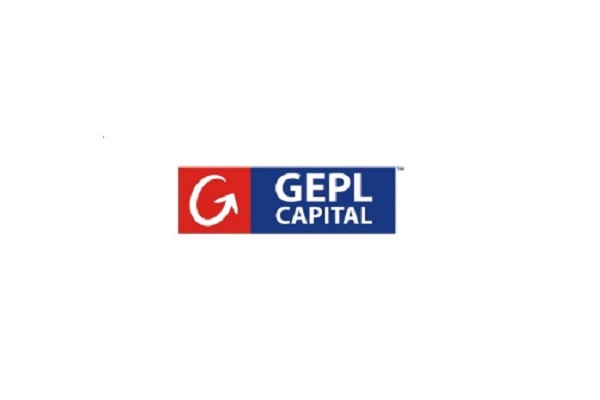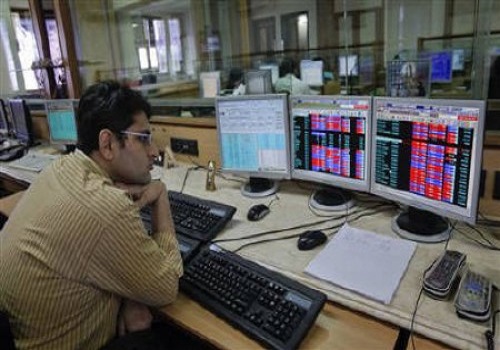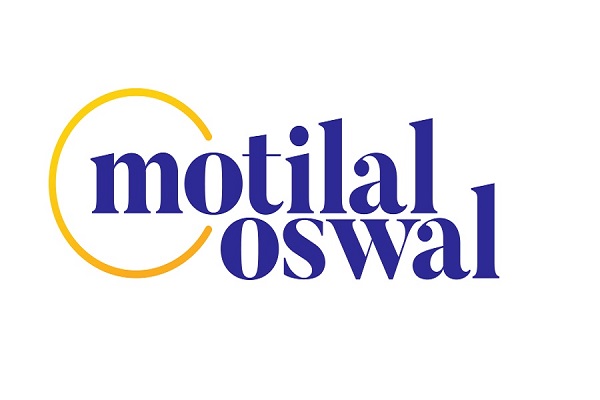Gold prices slipped by -0.51% to settle at Rs.77,317 per 10 grams as a stronger dollar spurred profit-taking - Kedia Advisory

Gold
Gold dropped as firmer dollar spurred some profit taking after new weekly jobless claims data
Gold prices slipped by -0.51% to settle at Rs.77,317 per 10 grams as a stronger dollar spurred profit-taking. The greenback held firm near two-year highs on expectations of prolonged higher U.S. interest rates and concerns over potential tariffs from the incoming Trump administration. Weekly jobless claims data highlighted the resilience of the U.S. labor market, dampening gold's appeal as a safe-haven asset. Meanwhile, uncertainty around Donald Trump’s second term, coupled with anticipated inflationary pressures from proposed trade policies, continues to weigh on market sentiment.
On the global front, the World Gold Council reported that central banks are poised to continue gold purchases over the next year, supporting medium-term price expectations. In October, net central bank gold purchases reached 60 tons, doubling the 12-month average. India led the surge, adding 27 tons in October and marking a year-to-date (YTD) total of 77 tons, a five-fold increase compared to 2023. Turkey and Poland followed closely, adding 72 tons and 69 tons YTD, respectively, highlighting strong demand from emerging markets.
In physical markets, Indian gold discounts remained at $14 per ounce due to elevated prices, while Chinese premiums rose to $4.50–$10 per ounce ahead of the Chinese New Year. Premiums also increased in other key markets like Singapore and Hong Kong, indicating robust regional demand.
The market witnessed long liquidation, with open interest dropping by -2.04% to 12,620. Support is at ?77,075, with a further downside likely testing Rs.76,825. Resistance stands at Rs.77,760, and a break above could drive prices towards Rs.78,195.
Silver
Silver seen supported as ongoing geopolitical and economic uncertainties fueled safe-haven demand
Silver prices edged up by 0.05% to settle at Rs.89,221 per kg as safe-haven demand remained supported by ongoing geopolitical and economic uncertainties. Reports that U.S. President Joe Biden was briefed on potential strikes against Iran’s nuclear facilities heightened geopolitical tensions, just weeks ahead of Donald Trump’s inauguration. Additionally, concerns over the policy direction under the incoming Trump administration contributed to the demand for silver.
Weaker-than-expected manufacturing data from China, the world's top metals consumer, tempered bullish sentiment. The Caixin/S&P Global Manufacturing PMI dropped to 50.5 in December, down from 51.5 in November, and missed market expectations of 51.7. To address these challenges, the People’s Bank of China (PBoC) signaled plans to lower short-term interest rates to stimulate economic activity and counter deflationary risks.
Silver's structural market deficit is projected to persist in 2024, though it will narrow by 4% to 182 million ounces, according to the Silver Institute. Record industrial demand and recovering jewelry consumption are expected to lift total demand to 1.21 billion ounces, even as physical investment declines by 16%. Mine supply is forecast to rise by 1%, with notable contributions from Mexico, Chile, and the U.S., while recycling is anticipated to increase by 5% due to higher western silverware scrap.
The market witnessed short covering, with open interest falling by -4.8% to 31,458. Support is at Rs.88,775, with a potential test of Rs.88,335 if breached. Resistance is pegged at Rs.89,835, and a breakout could push prices toward Rs.90,455.
Crude Oil
Crude oil gains on optimism surrounding China's commitment to economic growth and signs of shrinking crude stockpiles in U.S.
Crude oil prices rose by 1.17% to settle at Rs.6,373 per barrel, driven by optimism surrounding China's economy after President Xi Jinping pledged to promote growth. Expectations that China’s central bank may cut interest rates in 2025 further bolstered sentiment. Additionally, forecasts for colder weather in certain regions supported demand for heating oil, providing a near-term lift to prices. However, the broader outlook remains uncertain due to concerns over oversupply and the potential revival of idled OPEC+ production.
U.S. crude inventories fell by 1.178 million barrels in the week ending December 27, marking the sixth consecutive weekly decline, although the draw was smaller than the expected 2.75 million barrels. Stocks at the Cushing, Oklahoma hub also dropped by 0.142 million barrels. On the flip side, gasoline and distillate inventories surged, with gasoline stocks rising by 7.717 million barrels and distillate inventories increasing by 6.406 million barrels, both far exceeding expectations.
U.S. oil production in October reached a record 13.46 million barrels per day (bpd), while overall demand for crude oil and petroleum rose to 21.01 million bpd, the highest since August 2019. Demand for distillate fuels, including diesel and heating oil, increased by 347,000 bpd to 4.06 million bpd, reflecting robust consumption levels.
The market saw short covering as open interest fell by -0.35% to 14,389. Support is at Rs.6,285, with further downside possible to Rs.6,196. Resistance is seen at Rs.6,423, and a breakout could push prices to Rs.6,472, indicating mild bullish momentum.
Natural Gas
Natural gas dropped on forecasts for less cold weather in mid January than previously expected.
Natural gas prices plummeted by -9.04% to settle at Rs.289.8, driven by forecasts of milder-than-expected weather in mid-January. This sharp decline occurred despite near-record LNG export flows, elevated gas prices in Europe, and projections for colder-than-normal weather in the U.S. through mid-January. Average U.S. gas output in the Lower 48 states rose to 105.0 billion cubic feet per day (bcfd) in January, slightly below the December 2023 record of 105.3 bcfd, signaling robust supply levels.
Demand forecasts remain strong, with total U.S. gas demand, including exports, expected to rise from 119.5 bcfd this week to 146.3 bcfd next week before easing to 145.0 bcfd. LNG export flows increased to an average of 15.0 bcfd in January, up from 14.4 bcfd in December, nearing record highs. Meanwhile, U.S. utilities reported a gas storage withdrawal of 116 billion cubic feet, lower than market expectations of 127 bcf, narrowing the five-year average surplus to 4.7%.
The U.S. EIA projects a decline in natural gas production in 2024 to 103.2 bcfd, from the 2023 record of 103.8 bcfd, as producers cut drilling. However, demand is forecasted to hit a record 90.5 bcfd in 2024, reflecting higher consumption needs. On the global front, Gazprom’s gas production is set to rise to 416 bcm, recovering from 2023 lows, with exports to China increasing to 31 bcm.
The market witnessed fresh selling with open interest rising by 44.12% to 16,215 contracts. Support is at Rs.278.6, with further downside possible to Rs.267.3. Resistance is at Rs.309.9, with potential for a move towards Rs.329.9 on recovery.
Copper
Copper gains after China pledged more support for its ailing economy.
Copper prices edged up by 0.69% to close at Rs.800.35, supported by China’s pledge for increased economic stimulus. China announced plans to boost ultra-long treasury bond funding in 2025, aiming to bolster business investment and consumer spending. However, the upside was limited by concerns over potential U.S. tariffs, which could affect the world's largest metal consumer.
In terms of supply and demand, global refined copper production in October was 2.30 million metric tons, slightly lower than consumption at 2.34 million metric tons, resulting in a 41,000 metric tons deficit. Despite this, the market maintained a surplus of 287,000 metric tons for the first 10 months of the year, as per ICSG data. China's copper imports rose to a one-year high in November, reaching 528,000 tons, reflecting increased restocking and competitive global prices. However, imports of copper concentrate fell by 7.8% YoY last month, although the total for the first 11 months showed a modest 2.2% increase.
Copper inventories in warehouses monitored by the Shanghai Futures Exchange rose by 12.1% week-on-week, while Chile's copper production in November rose by 9.8% YoY to 488,519 metric tons.
The market is witnessing short covering as open interest dropped by 9.41% to 9,124 contracts while prices gained Rs.5.5. Copper is currently supported at Rs.794.5, with a potential test of Rs.788.7 on further declines. Resistance is seen at Rs.804.3, with a move above possibly pushing prices to Rs.808.3.
Zinc
Zinc dropped amid expectations of a deteriorating demand outlook were reinforced by weak manufacturing activity.
Zinc prices declined by 0.98% to settle at Rs.273.45 as concerns over weakening global manufacturing activity and demand outlook weighed on the market. The prospect of potential tariffs under U.S. President-elect Donald Trump added to the uncertainty, fueling fears of a trade war that could dampen economic growth. The weak manufacturing data from both China and the Eurozone highlighted a challenging demand environment, with China's factory activity growing at a slower-than-expected pace in December.
On the supply side, the global zinc market recorded a deficit of 69,100 metric tons in October, up from 47,000 metric tons in September, according to ILZSG data. However, the first ten months of 2024 saw a surplus of 19,000 tons, a significant reduction from the 356,000-ton surplus in the same period of 2023, driven by a 1.7% drop in refined metal production. Lower mine output in Canada, China, South Africa, and Peru contributed to a 3.8% decline in global zinc production during January-October.
In China, refined zinc production showed mixed trends. November output increased slightly MoM but was down 12% YoY. For the year, cumulative production decreased by over 6% YoY, though December production is expected to rise by over 20,000 mt MoM, reflecting a 5% increase.
The market exhibited fresh selling pressure, with open interest rising 10.89% to 3,421 contracts while prices dropped Rs.2.7. Zinc is supported at Rs.272.2, with further downside potentially testing Rs.270.8. Resistance is seen at Rs.275.5, with a move above targeting Rs.277.4.
Aluminium
Aluminium prices dropped amid signs of weakening demand in China.
Aluminium prices declined by 0.85% to close at ?238.25, influenced by weakening demand signals from China. Disappointing economic data from the country, including declining industry profits, continued to dampen the outlook for demand, adding bearish pressure to prices. Despite this, downside was limited by concerns over shrinking supplies, as aluminium stocks in LME-registered warehouses have decreased by over 40% since May last year to 634,650 tons. The high percentage of cancelled warrants (54% of total) further indicates that more aluminium is expected to leave LME warehouses in the near future.
Global primary aluminium output showed a year-on-year increase of 3% in November, amounting to 6.04 million tonnes, according to data from the International Aluminium Institute (IAI). In October, the refined aluminium market was in a shortfall of 40,300 tons, with total production reaching 6.0856 million tons against a consumption of 6.1259 million tons. Over the first ten months of the year, global production was 59.6524 million tons while consumption reached 59.985 million tons, indicating a supply shortage of 332,600 tons.
In China, aluminium output rose 3.6% in November to 3.71 million metric tons, as capacity increases offset the impact of declining industry profits. Daily output averaged 123,667 tons, a 3% increase from October. Cumulative production for the first eleven months of the year reached 40.22 million metric tons, a 4.6% increase compared to the same period last year. China's robust production reflects its position as the world’s largest aluminium producer.
Aluminium prices are under fresh selling pressure, with open interest rising by 5.04% to 3,711 contracts while prices fell by Rs.2.05. Support is seen at Rs.237.2, with a potential downside target of Rs.236. Resistance is likely at Rs.240.3, and a break above could push prices towards Rs.242.2.
Cottoncandy
Cotton gains as Cotton yarn prices in south India increased due to rising demand from garment industries.
Cotton candy prices settled slightly lower by 0.22% at Rs.54,320, driven by rising global cotton production projections for the 2024-25 season. Global cotton production is projected to rise by over 1.2 million bales to 117.4 million bales, supported by increased production in India and Argentina. In India, the three primary cotton-producing states - Punjab, Haryana, and Rajasthan - have witnessed a sharp decline of 43% in arrivals of kapas (unginned cotton) until November 30 compared to the same period last year. This significant reduction is causing concerns throughout the supply chain, as farmers hold back their produce in anticipation of higher prices, while ginners and spinners face raw material shortages, particularly in Punjab.
Cotton yarn prices in South India have increased due to rising demand from garment industries and strong export orders. The Cotton Association of India (CAI) has maintained its cotton consumption estimate for the 2024-25 season at 313 lakh bales of 170 kgs each. Additionally, cotton imports into India are expected to rise significantly to 25 lakh bales from 15.20 lakh bales last season, reflecting a 9.80 lakh bale increase. The ongoing crop year 2024-25 has already seen about 9 lakh bales arrive at Indian ports by November 30, with closing stocks estimated at 26.44 lakh bales by September 30, 2025, lower than last year's 30.19 lakh bales.
The global cotton balance sheet for 2024/25 shows increased production, consumption, and ending stocks, with projected world production raised by 1.2 million bales to 117.4 million. India’s crop is responsible for a significant portion of this increase, along with larger crops from Argentina, Benin, and Brazil. Meanwhile, U.S. cotton production for 2024/25 is revised higher to nearly 14.3 million bales.
Cotton candy prices are experiencing fresh selling, with open interest rising by 2.65% to 387 contracts and prices down Rs.120. Immediate support is seen at Rs.54,160, with a potential test of Rs.53,990. Resistance is likely around Rs.54,540, with a move above possibly testing Rs.54,750.
Turmeric
Turmeric gains on strong buying activity amid reports of low supplies till the arrival of new crop.
Turmeric prices settled up by 0.88% at Rs.15,422, driven by strong buying activity amid concerns over low supplies until the arrival of the new crop. Prices are expected to remain firm as turmeric crop conditions are reported to be in good to excellent shape with minimal weather-related disruptions. Despite an increase in arrivals to 9,030 bags from 7,965 bags in the previous session, low stock levels continue to support firm prices.
The delay in harvesting due to prolonged vegetation growth caused by prolonged rains could impact the timeline of fresh supplies. In contrast, Indonesia is currently experiencing peak harvesting due to dry weather, which may offset some supply concerns. Furthermore, turmeric sowing has increased significantly in key regions. In the Erode line, sowing has doubled compared to last year, and in Maharashtra, Telangana, and Andhra Pradesh, 30-35% higher sowing has been estimated. This increased acreage may lead to a rise in production, which could impact future prices.
Exports have been robust, with turmeric exports during April-October 2024 jumping by 6.57% to 108,879.96 tonnes compared to the same period last year. Exports in October 2024 reached 15,938.21 tonnes, up 57.22% from October 2023, further contributing to the bullish sentiment. Conversely, turmeric imports during the same period rose by 118.99% to 17,692.28 tonnes, indicating growing demand domestically and internationally.
Turmeric is under short covering as open interest has dropped by 0.41% to 12,120 contracts, while prices are up by Rs.134. Immediate support is seen at Rs.15,272, with a potential test of Rs.15,124. Resistance is likely to be around Rs.15,658, with a move above potentially testing Rs.15,896.
Jeera
Jeera prices gained as sowing has been delayed.
Jeera prices settled up by 0.78% at Rs.24,415, supported by delayed sowing in key producing states like Gujarat and Rajasthan due to weather challenges. Higher temperatures over the past few weeks have affected seeding and germination, particularly in Gujarat, which accounts for the largest share of jeera production. As of November 25, only 57,915 hectares were seeded, a significant drop compared to last year's 2.44 lakh hectares. This has resulted in only 15% of the normal cropping area being covered so far, according to state agriculture department data.
Despite a 10% decrease in cumin production estimated at 8.6 lakh tonnes from over 11.87 lakh hectares in 2023-24, global demand remains robust. Indian cumin is currently the cheapest in the world, making it attractive for international buyers. With prices quoted at $3,050 per tonne, Indian cumin is significantly cheaper than Chinese cumin, which is 200 to 250 dollars higher. The ongoing tensions in the Middle East have further boosted demand, especially from European countries and other global regions.
Exports have surged during April-October 2024, increasing by 77.37% to 135,450.64 tonnes compared to 76,367.90 tonnes during the same period in 2023. October 2024 saw exports rise to 16,257.44 tonnes, up 161.04% from 6,228.01 tonnes in October 2023.
Jeera is under short covering as open interest has dropped by 7.9% to 1,539 contracts, while prices have risen by Rs.190. Immediate support is seen at Rs.24,190, with a potential test of Rs.23,970. Resistance is likely at Rs.24,640, with a move above potentially testing Rs.24,870.
Views express by all participants are for information & academic purpose only. Kindly read disclaimer before referring below views




















